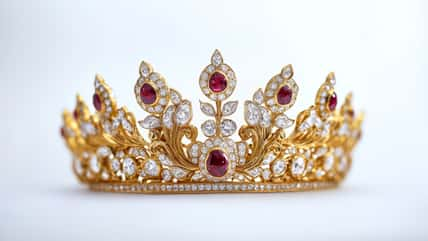She Won The Pulitzer Prize In 1932 And A Nobel Peace Prize In Literature In 1938 For Her Literary Work That Portrayed Life And Human Rights In Asia

Before there was the internet and a huge amount of access to information online, we relied solely on fantastic writers and historians to teach us about how other people in other parts of the world live.
One of those writers who made an impact and used her platform to educate Americans on another part of the world was Pearl S. Buck, whose literary works on life and China and human rights in Asia won her a Nobel Prize in Literature.
Pearl was born at her mother’s family home in West Virginia in 1892. Her parents had worked as missionaries in China and were on home leave when she was born. When Pearl was only three months old, she moved back to China with her family.
Growing up, she was educated by her mom and a Chinese tutor and was bilingual. Pearl had a passion for writing at a young age and was even published in a children’s newspaper when she was six. She spent many of her childhood years traveling back and forth from China to West Virginia, where she really valued visits to her mother’s home.
Pearl returned to the United States in 1910 to attend Randolph Macon Women’s College in Virginia.
She earned her Bachelor’s in Philosophy and returned to China after graduating. Around this time, she met agricultural missionary John Lossing Buck, whom she married in 1917.
Pearl and John lived in China for several years together and became parents. She worked as a teacher at local universities. Around this time, Pearl witnessed the Boxer Rebellion and the rise of the nationalist movement. She began to see how difficult life had become for Chinese peasants, and this issue would inspire her most popular piece of literature.
After returning to America to receive her Master’s in English at Cornell University in 1924, Pearl wrote articles for several magazines and published her first novel, “East Wind: West Wind,” written about her life experiences in China, in 1930.
The following year, Pearl published “The Good Earth,” a historical fiction novel about peasant life in China in the 1920s. “The Good Earth” was her claim to fame and remained a best seller for almost two years.

Photo 21049254 © Yuri Yavnik – Dreamstime.com – illustrative purposes only
“The Good Earth” was such a successful and impacting book that it won Pearl some of the most esteemed literary awards, including the Pulitzer Prize in 1932 and eventually a Nobel Peace Prize in Literature in 1938. The novel was adapted into a Broadway production and film.
Pearl didn’t only have an impressive career as an author but was also a very hardworking advocate. While living in the United States during the 1930s, she did a lot of work to support the civil rights and women’s rights movements. She wrote articles for the NAACP’s “Crisis” magazine and chaired the Committee against Racial Discrimination during World War II.
When war broke out between Japan and China in 1937, Pearl and her second husband, publisher Richard Walsh, formed the China Emergency Relief Committee to send Chinese citizens medical supplies, food, and clothing. She founded an American international adoption agency in 1949 and the Pearl S. Buck Foundation in 1964.
During her activism and philanthropy, she continued to write various works of literature, from novels to children’s books to biographies. Pearl eventually passed away due to lung cancer in America at 80 in 1973.
Pearl’s career as an author and activist helped give Americans and American officials a much more realistic look into life for people in China. She inspired many acts of charity and kindness and will always be remembered for her efforts and talents.
If true crime defines your free time, this is for you: join Chip Chick’s True Crime Tribe
In 1978, This Mom Of Three From Nebraska Mysteriously Vanished After Visiting A Local Bar
This Towel Rolling Technique That Will Make Your Bathroom Feel Like A Beautiful Five-Star Hotel
Sign up for Chip Chick’s newsletter and get stories like this delivered to your inbox.
More About:Chicks We Love





